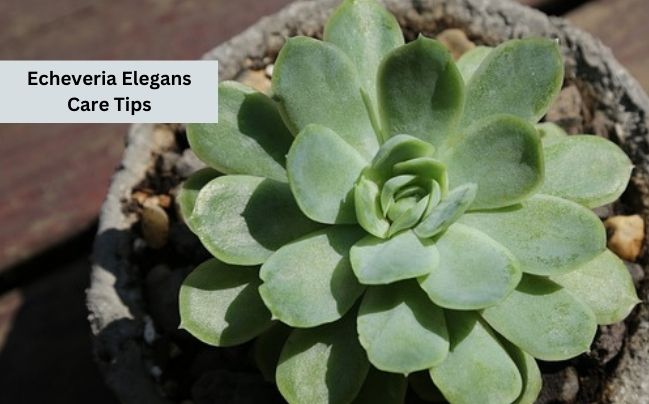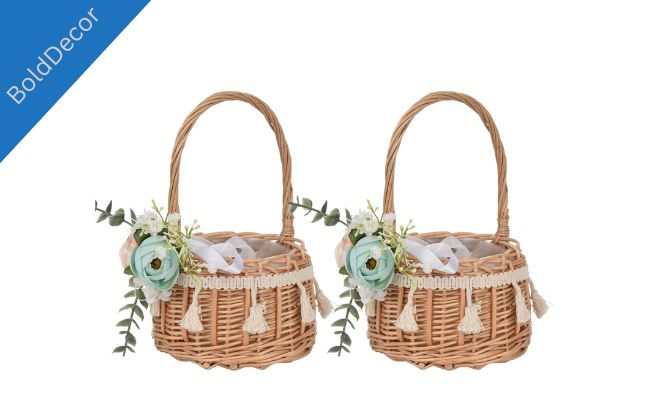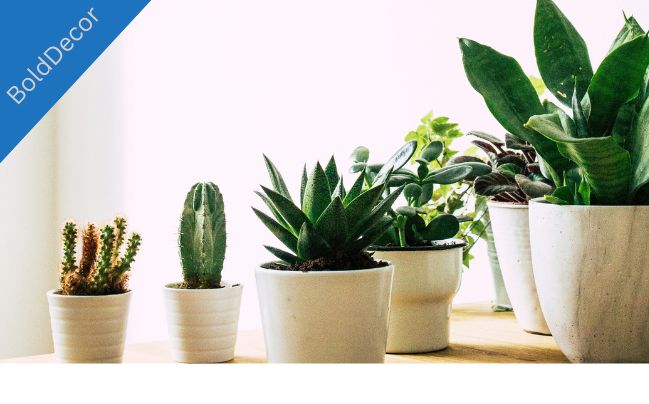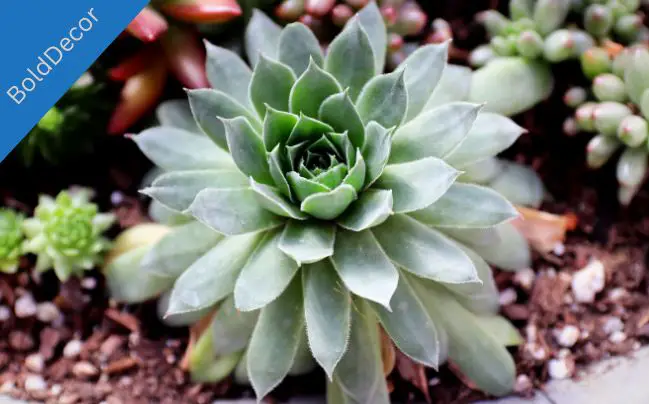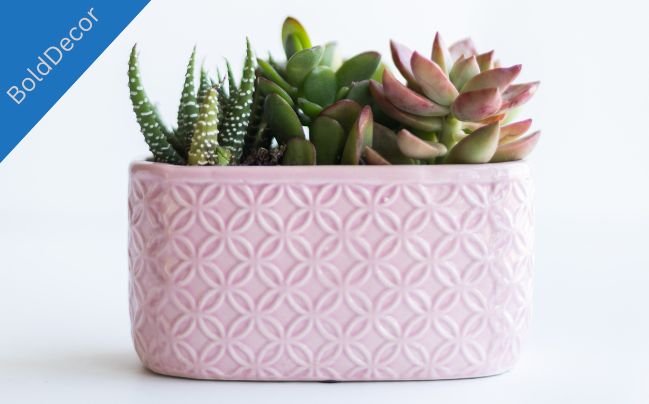If you’re a succulent enthusiast, you’ve probably heard of echeveria elegans – the Mexican Snowball succulent. These beautiful rosette-shaped succulents are prized for their delicate pastel hues, making them an elegant addition to any indoor or outdoor garden.
In this article, we’ll provide care tips to ensure that your echeveria elegans thrives and maintains its luscious foliage. From understanding the different echeveria elegans varieties and optimal soil compositions to watering and fertilizing techniques, we’ve got you covered.
Keep reading to learn how to care for your echeveria succulent and maintain its beauty for years to come!
Key Takeaways:
- Proper care is essential for maintaining the health and beauty of echeveria elegans.
- Understanding the different varieties and their care requirements is crucial in choosing the right echeveria for your space.
- Location, soil composition, watering frequency, and fertilizing techniques play vital roles in echeveria elegans care.
- Pruning and propagating techniques can help maintain the shape and abundance of your echeveria elegans.
- Winter care and pest prevention are also critical in ensuring your echeveria succulent’s survival.
Table of Contents
Echeveria Elegans Varieties
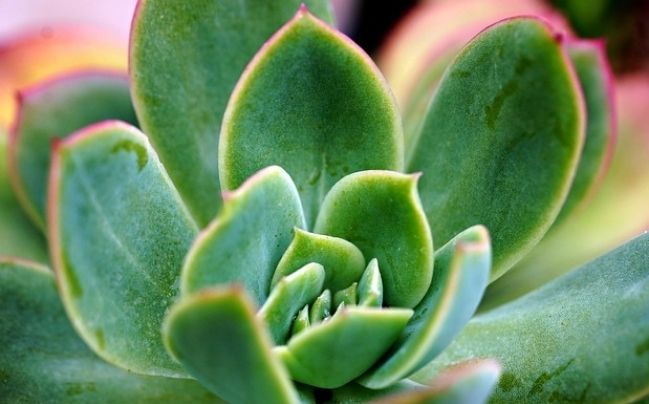
When it comes to collecting succulents, echeveria elegans varieties are a must-have for their exquisite beauty and variety. Each one of these charming plants boasts its own unique features and care requirements, making them a diverse and fascinating addition to any succulent collection.
In this section, we will introduce you to some of the most popular echeveria elegans varieties to help you choose the perfect one for your growing space.
Echeveria Pulidonis
Echeveria pulidonis is an eye-catching variety that features a bright green rosette of leaves with reddish-pink edges. Its leaves are covered in a powdery coating that gives it a frosted appearance, and it produces an impressive flower spike with bright yellow blooms. This variety prefers bright, filtered light and a well-draining potting medium.
Echeveria Agavoides
Echeveria agavoides is another beloved variety known for its symmetrical rosette of triangular, pointed leaves that range from green to reddish-bronze. This slow-growing succulent requires abundant sunshine and infrequent watering to prevent root rot.
Echeveria Runyonii
Echeveria runyonii is a stunning blue-green echeveria elegans variety that produces low-growing rosettes that eventually clump together to form a dense and attractive mat. This variety thrives in bright light and requires moderate watering during the growing season.
Echeveria Laui
Echeveria laui is a show-stopper echeveria elegans variety that boasts striking silver-blue leaves with unique ridges and grooves. It prefers bright, filtered light and a well-draining soil that is not too compact or dense.
Echeveria Lilacina
Echeveria lilacina is a mesmerizing variety with its gorgeous powdery lilac leaves that have a delicate white coating. This echeveria prefers a warm, bright and sunny growing environment and a well-draining soil.
| Variety | Unique Features | Care Requirements |
|---|---|---|
| Echeveria Pulidonis | Bright green rosette of leaves with reddish-pink edges, frosted appearance | Bright, filtered light, well-draining potting medium |
| Echeveria Agavoides | Triangular, pointed leaves, green to reddish-bronze | Abundant sunshine, infrequent watering to prevent root rot |
| Echeveria Runyonii | Blue-green leaves, low-growing rosettes that eventually clump together | Bright light, moderate watering during growing season |
| Echeveria Laui | Silver-blue leaves with unique ridges and grooves | Bright, filtered light, well-draining soil |
| Echeveria Lilacina | Delightful powdery lilac leaves | Warm, bright and sunny environment, well-draining soil |
Whether you prefer the powdery blue-green of echeveria runyonii or the frosted beauty of echeveria pulidonis, each echeveria elegans variety is a stunning and rewarding addition to your succulent collection. Consider the unique characteristics and care requirements of each variety to choose the perfect one that will add its own charm and vibrancy to your growing space.
Choosing the Right Location for Your Echeveria Elegans
When deciding on the location for your echeveria elegans, it’s essential to consider the plant’s lighting and temperature needs. These factors play a crucial role in the growth and health of the succulent.
Echeveria elegans requires bright but indirect sunlight for at least six hours daily. Too much direct sunlight can lead to sunburn, while insufficient light can cause the plant to stretch or become weak.
Temperature is another crucial factor to consider. This succulent prefers warm temperatures, ranging between 65-80°F (18-27°C). During winter, it’s best to place it in a spot with temperatures above 50°F (10°C) to prevent frost damage.
It’s also crucial to provide proper air circulation to prevent fungal growth and rot. Consider supplementing natural air circulation by using a small fan.
Optimal Soil and Potting Mix for Echeveria Elegans
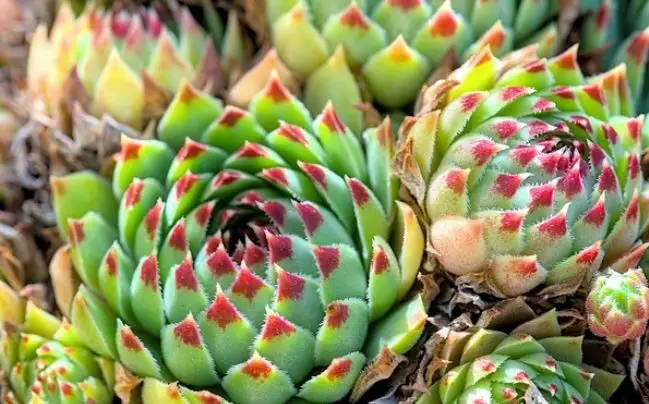
Choosing the right soil and potting mix is crucial to ensure that your echeveria elegans thrives and remains healthy. The soil should be well-draining and aerated to prevent water accumulation and root rot. A combination of gritty, sandy soil with perlite or pumice will provide the ideal soil composition and drainage requirements.
When potting your echeveria elegans, use a container with drainage holes to allow excess water to escape. Plant the succulent in the soil and gently pack it down, making sure not to damage the roots or compact the soil too tightly.
| Soil Composition | Drainage Requirements | Potting Tips |
|---|---|---|
| Gritty, sandy soil with perlite or pumice | Well-draining and aerated soil | Use a container with drainage holes, plant gently without damaging roots |
Also, make sure to use a suitable pot size for your echeveria elegans, ensuring that it has enough room to grow and that the potting mix remains moist but not waterlogged. With the right soil and potting mix, your succulent will thrive, displaying its lush, rosette-shaped leaves and stunning pastel hues.
Tip: Allow the soil to dry out between watering to prevent drowning the plant roots.
Watering Guide for Echeveria Elegans
Proper watering is key to maintaining the health and beauty of your echeveria elegans. These succulents are sensitive to overwatering, so it’s essential to provide just the right amount of moisture. Here are some care tips for watering your echeveria elegans:
Watering Frequency
Echeveria elegans prefers well-draining soil and should be watered only when the top inch of soil is dry. In general, you can expect to water your echeveria elegans every 7-10 days, but this can vary depending on the temperature, humidity, and sunlight conditions. In hot weather, you may need to water more frequently, while in cooler weather, you can cut back on watering. Always check the soil before watering to avoid overwatering.
Watering Methods
When watering your echeveria elegans, the aim is to moisten the entire soil without drenching the plant. Here are some methods to consider:
- Bottom watering: Place the pot in a shallow tray of water and allow the soil to soak up moisture from the bottom. Remove the pot from the water when the soil is moist.
- Top watering: Use a watering can with a small spout to target the soil around the plant, rather than pouring water directly on the leaves. Water until you see moisture seeping from the drainage holes.
Signs of Overwatering
Overwatering is a common mistake that can harm your echeveria elegans. Here are some signs to watch out for:
- Yellowing leaves
- Soft, mushy leaves
- Root rot
If you notice any of these signs, reduce watering and allow the soil to dry out completely before watering again.
By following these watering tips, you can help your echeveria elegans thrive and remain healthy for years to come.
Fertilizing Echeveria Elegans for Optimal Growth
Echeveria elegans is a stunning succulent that can flourish with the proper care and attention. A balanced and appropriate fertilizer regimen is crucial for promoting optimal growth and blooming.
Types of Fertilizers: Echeveria elegans requires low-nitrogen fertilizers and a balanced mix of macronutrients like phosphorus, nitrogen, and potassium.
Application Methods: Apply the fertilizer on well-hydrated soil and minimize contact with the foliage or stem to prevent burning. It’s best to avoid applying during the dormant season, usually in winter. Water your plants a day before applying the fertilizer to prevent shock.
Recommended Frequency: Fertilize your echeveria elegans at least once to twice per month during the growing season, which is usually from spring to summer. Cut back to once a month or less during fall and winter.
It’s crucial to follow these fertilizing guidelines to guarantee the best results, avoid fertilizer burn and plant death, and ensure lush, vibrant foliage.
Pruning and Propagating Echeveria Elegans
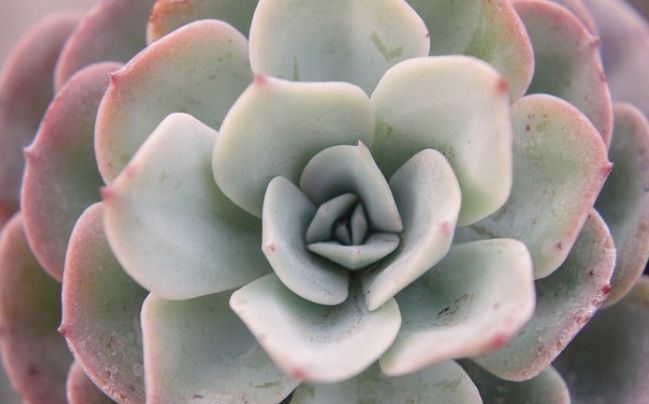
Pruning and propagating your echeveria elegans is a crucial step to maintain its shape and health. It is also an opportunity to expand your succulent collection. There are different techniques to prune and propagate echeveria elegans, but it is best to do it during the active growing season, which is in spring and summer.
Pruning Echeveria Elegans
Pruning echeveria elegans is essential to keep it healthy and to maintain its shape. Use a sharp and sterilized pair of scissors or pruning shears to cut off any dead, damaged, or withered leaves, as leaving these on can promote pests and diseases. You can also trim the taller and leggier stems to stimulate new growth and keep the plant compact.
Tip: If your echeveria elegans has grown too tall, you can cut off the top rosette and leave it to callous over for a few days before planting it in a new pot to propagate.
Propagating Echeveria Elegans
Propagating echeveria elegans allows you to create new plants from your existing one. There are a few ways to propagate echeveria elegans, but the most common methods are through stem and leaf cuttings.
To propagate through stem cuttings, use a sharp and sterilized pair of scissors or pruning shears to cut off a stem with a few leaves attached. Let it callous over for one to two days before planting it in a well-draining potting mix. Keep the soil barely moist for the first few weeks and then gradually increase the watering as the new plant matures.
To propagate through leaf cuttings, gently twist off a healthy and plump leaf from the bottom of the plant. Let it callous over for three to five days before laying it on top of a well-draining potting mix, pressing it gently to promote contact. Keep the soil barely moist and maintain high humidity by covering the pot with a clear plastic bag or container until new leaves and roots emerge.
Protecting Echeveria Elegans from Pests and Diseases
While echeveria elegans is a relatively low-maintenance succulent, it is not immune to pests and diseases that can harm its health. Here are some common problems to look out for:
Pests:
| Pest | Description | Treatment |
|---|---|---|
| Mealybugs | Small, white, fuzzy insects that suck the sap from leaves/stems | Clean affected areas with rubbing alcohol and apply neem oil. Introduce natural predators like ladybugs or lacewings. |
| Spider mites | Tiny spider-like insects that damage plants by sucking plant fluids | Spray them off with water. You can also use neem oil or insecticidal soap. Introduce natural predators like ladybugs or lacewings. |
| Scale insects | Small, hard, brown insects that attach themselves to the leaves and stems | Remove the scale by hand or with a cotton swab dipped in rubbing alcohol. Introduce natural predators like ladybugs or lacewings. |
Diseases:
The most common diseases that may affect echeveria elegans are root rot, leaf spots, and powdery mildew. To prevent these diseases, it’s important to avoid overwatering and provide proper airflow. In case of infection, remove affected areas and treat with an appropriate fungicide.
Regular inspection and early detection of pests and diseases are the key to maintaining the health of your echeveria elegans. By keeping a watchful eye and taking prompt action, you can prevent infestations and infections from damaging your succulent collection.
Winter Care for Echeveria Elegans
Winter can be a challenging time for echeveria elegans due to colder temperatures and reduced sunlight. To ensure your succulent survives and thrives during these months, follow the essential care tips outlined below:
- Reduce watering: Echeveria elegans enters a dormant phase during winter, which means that it requires less water. Reduce watering frequency to once every 2-3 weeks, ensuring that the soil dries out entirely between watering sessions.
- Provide ample sunlight: Position your echeveria elegans in a spot that receives bright, indirect sunlight for at least 6 hours daily. If possible, supplement the natural light with artificial grow lights to ensure that your succulent gets adequate light for photosynthesis.
- Optimize temperature: Echeveria elegans thrives in temperatures between 50-70°F. Ensure that you protect your succulent from frost and freezing temperatures by placing it indoors near a south-facing window or using a protective cover outside.
- Monitor for pests and diseases: During winter, echeveria elegans may be susceptible to fungal infections and rot due to increased moisture. Monitor your succulent regularly for signs of pests such as mealybugs and scale, and treat any infections promptly with a suitable fungicide.
By following these care tips, you can help your echeveria elegans survive the harsh winter months and emerge stronger and healthier come spring.
Troubleshooting Common Issues with Echeveria Elegans
Despite your best efforts, issues can still arise with echeveria elegans. However, with timely identification and proper care, you can address these issues and keep your succulents happy and healthy. Here are some common problems and troubleshooting tips:
Leaf discoloration
If you notice that the leaves of your echeveria elegans are turning yellow or brown, it could be a sign of overwatering or underwatering. Check the soil moisture levels and adjust your watering schedule accordingly. Also, make sure that the pot has proper drainage and isn’t holding water at the bottom.
Wilting
Wilting is another sign of underwatering or overwatering. If you notice that your echeveria elegans is drooping and the leaves are soft and mushy, it could be a sign of overwatering. On the other hand, if the leaves are crispy and dry, it could be an indication of underwatering. Adjust your watering schedule and observe how the plant reacts.
Pests
echeveria elegans is susceptible to mealybugs, spider mites, and aphids. To prevent and treat infestations, spray the plant with neem oil or insecticidal soap. You can also wipe down the leaves with a damp cloth regularly to remove any pests.
Root rot
Root rot is caused by overwatering and can be fatal to echeveria elegans. To prevent this, ensure that the soil is well-draining and that the pot has proper drainage. If you suspect root rot, remove the plant from the pot and let the roots dry out completely before repotting it in fresh soil.
Dying rosette
If the rosette of your echeveria elegans is dying, it could be a sign of natural aging or stress. You can propagate the plant by removing the rosette and planting it in fresh soil. Alternatively, you can let the plant produce offsets and propagate them instead.
By following these troubleshooting tips and providing proper care, you can keep your echeveria elegans healthy and thriving. Remember, each plant is unique, and it may take some trial and error to find the perfect care routine for your succulent.
Bottom line
Caring for echeveria elegans can be both rewarding and satisfying, especially when you see your succulent bloom and thrive. Remember to choose the right location and soil mix, monitor your watering frequency, and provide adequate fertilization and pruning to keep your succulent healthy.
With these care tips, you can overcome common issues and prevent pests and diseases from affecting your echeveria elegans. In turn, your plant will continue to beautify any space you place it in, bringing joy and relaxation to you and your guests.
Don’t be discouraged if you encounter any challenges when caring for your echeveria elegans. With time, patience, and attention to detail, you can nurture your succulent and enrich your plant collection. We hope this article has been informative and inspiring, and we wish you the best of luck in your echeveria elegans gardening journey.
FAQ
What is echeveria elegans?
Echeveria elegans, also known as the Mexican Snowball, is a stunning succulent characterized by its rosette-shaped leaves and delicate pastel hues.
What are some varieties of echeveria elegans?
Some popular varieties of echeveria elegans include echeveria pulidonis, echeveria agavoides, echeveria runyonii, echeveria laui, and echeveria lilacina. Each variety offers its own unique features and care requirements.
How should I choose the right location for my echeveria elegans?
It is important to provide your echeveria elegans with a location that offers the ideal sunlight exposure and temperature. Find a spot with bright, indirect light and ensure that the temperature remains between 65-75°F (18-24°C).
What type of soil and potting mix should I use for echeveria elegans?
Echeveria elegans thrives in well-draining soil. Use a sandy or gritty soil mix that allows water to flow through easily. Avoid using heavy soils that can cause root rot.
How often should I water my echeveria elegans?
Water your echeveria elegans thoroughly and then allow the soil to dry out between waterings. Typically, succulents like echeveria only need to be watered every 1-2 weeks, depending on the climate and season.
Do echeveria elegans need fertilizers?
Yes, echeveria elegans can benefit from a balanced and appropriate fertilizer regime. Use a diluted succulent fertilizer and apply it during the growing season, typically from spring to fall, following the manufacturer’s instructions.
How can I propagate my echeveria elegans?
Echeveria elegans can be propagated through leaf cuttings or offsets. Remove a healthy leaf or gently separate the offsets from the mother plant and allow them to callus before planting in well-draining soil.
What pests and diseases should I watch out for with echeveria elegans?
Common pests that can affect echeveria elegans include mealybugs, aphids, and spider mites. Diseases such as root rot and fungal infections can also occur. Regularly inspect your plants and treat any infestations or diseases promptly.
How should I care for my echeveria elegans during winter?
During winter, it is important to protect your echeveria elegans from frost and minimize watering. Place them in a sunny and sheltered location and reduce watering frequency to prevent root rot.
What should I do if my echeveria elegans is having issues like leaf discoloration or wilting?
Leaf discoloration and wilting can be indicators of various issues such as overwatering, underwatering, or pest infestations. Assess the watering and sunlight conditions and treat any pests accordingly.

